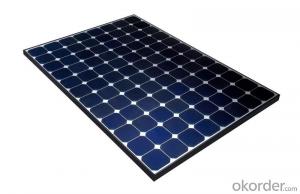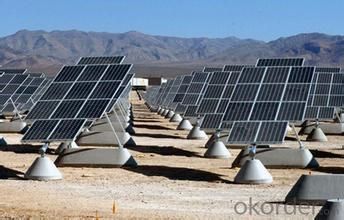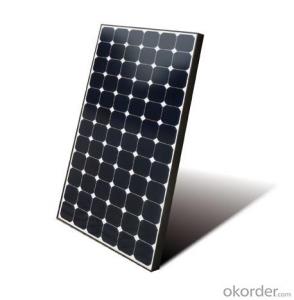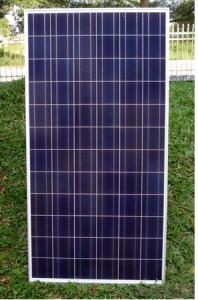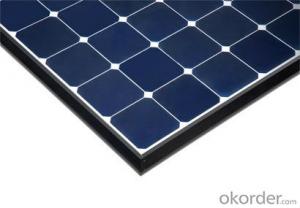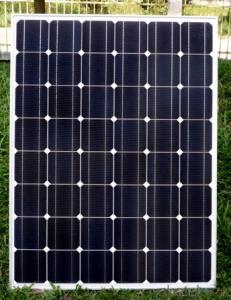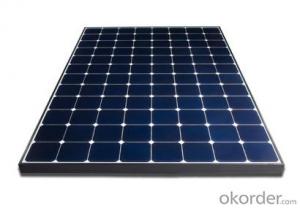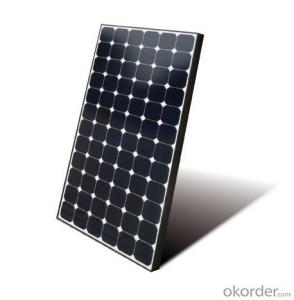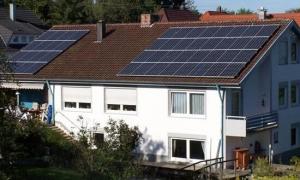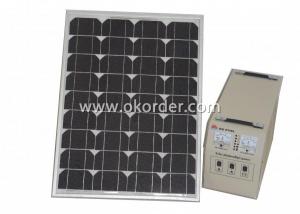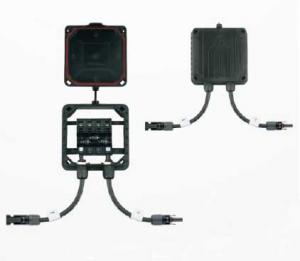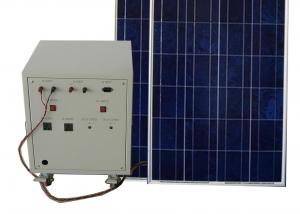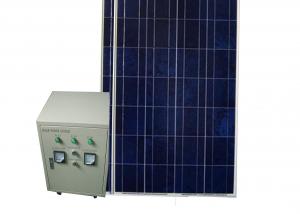CNBM Poly 200W Off Grid Solar Energy Systems Ambleside with 10 Years Warranty
- Loading Port:
- Tianjin
- Payment Terms:
- TT OR LC
- Min Order Qty:
- 100 watt
- Supply Capability:
- 1000 watt/month
OKorder Service Pledge
OKorder Financial Service
You Might Also Like
Specification
CNBM Poly 200W Off Grid Solar Sytem with 10 Years Warranty
Product description
Off-the-grid is a system and lifestyle[1] designed to help people function without the support of remote infrastructure, such as anelectrical grid. In electricity, off-grid can be stand-alone power system or mini-grids typically to provide a smaller community with electricity. Off-grid electrification is an approach to access electricity used in countries and areas with little access to electricity, due to scattered or distant population. The term off-the-grid (OTG) can refer to living in a self-sufficient manner without reliance on one or more public utilities. People who adopt this lifestyle are called off-gridders.[2]
The State of California is encouraging solar and wind power generation that is connected to the electrical grid to avoid the use of toxic lead acid batteries for night time storage.[12] Grid-tie systems are generally less expensive than off-grid systems due to the lack of additional equipment like charge controllers and the batteries. However, some systems may mitigate this difference by using old car batteries that can no longer supply enough current to start a car.[13]
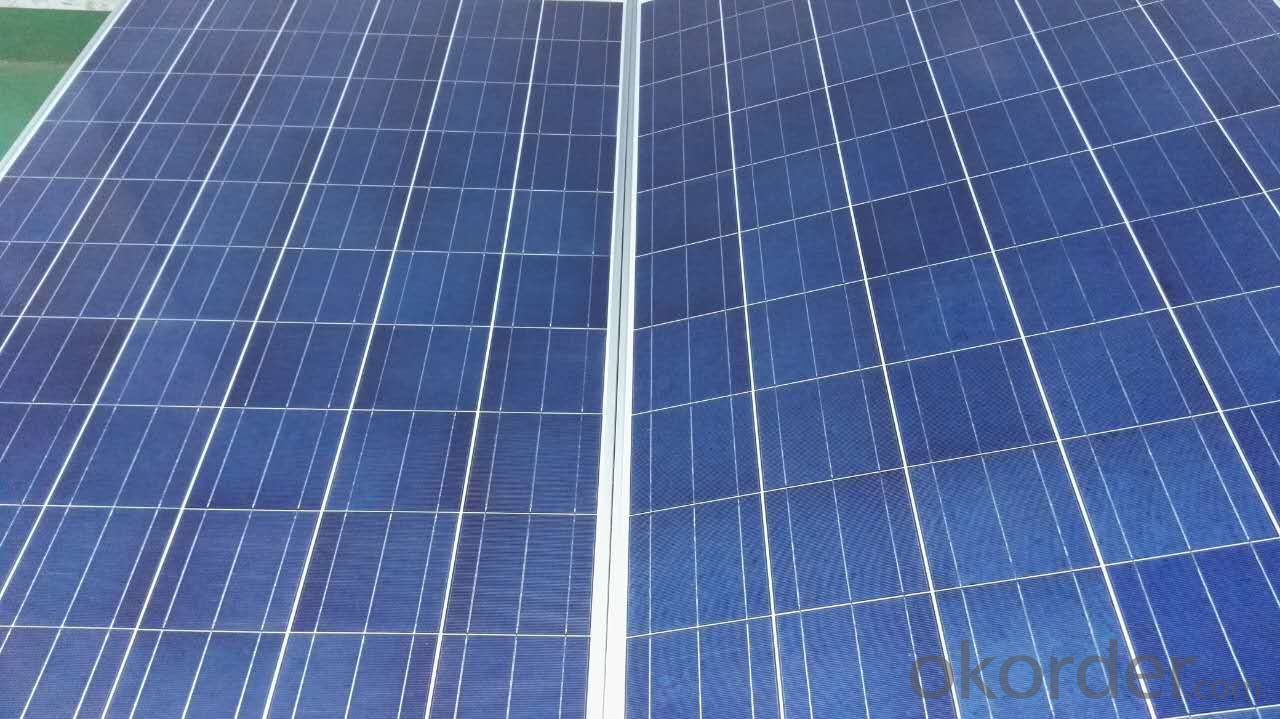
Application
Residential
Commercial
Industrial
Feature
Off-the-grid homes are autonomous; they do not rely on municipal water supply, sewer, natural gas, electrical power grid, or similar utility services. A true off-grid house is able to operate completely independently of all traditional public utility services. The idea has been recently popularized by certain celebrities including Ed Begley, Jr.[3] who stars in the Living with Ed[4] television show on the Home & Garden Television (HGTV) network. Actress Daryl Hannah promotes off-grid living and constructed her home in Colorado according to those principles, as does survival expert and Dual Survival co-star Cody Lundin,[5] who lives in a self-designed, passive solar earth house in the high-desert wilderness of Northern Arizona, collecting rainwater, composting waste, and paying nothing for utilities.[6][7]
Packaging
With carton and box
- Q: Can solar energy systems be used in areas with limited space for ground-mounted installations?
- Yes, solar energy systems can still be used in areas with limited space for ground-mounted installations. In such cases, alternative mounting options can be utilized, such as roof-mounted solar panels or vertical solar panel installations. Roof-mounted solar panels are a popular solution for homes and buildings with limited ground space, as they utilize the available roof area to capture sunlight and convert it into electricity. Additionally, vertical solar panel installations, where solar panels are mounted vertically on walls or other structures, can also be implemented in areas where ground space is limited. These vertical installations allow for solar energy generation in tight spaces or even on building facades. Therefore, even in areas with limited space for ground-mounted installations, solar energy systems can still be effectively utilized through alternative mounting options.
- Q: Can solar energy systems be used for heating swimming pools?
- Yes, solar energy systems can be used for heating swimming pools. Solar pool heating systems use energy from the sun to heat the water in the pool, reducing the need for conventional heating methods and saving energy costs.
- Q: Can solar energy systems be integrated into building design?
- Yes, solar energy systems can be integrated into building design. In fact, integrating solar energy systems into building design is becoming increasingly common and is considered a sustainable and cost-effective approach to generating electricity. There are various ways to incorporate solar energy systems into building design, including rooftop solar panels, solar facades, and solar windows. Rooftop solar panels are the most commonly used method of integrating solar energy systems into building design. They can be installed on the roofs of buildings, either as standalone structures or integrated into the roof itself. These panels capture sunlight and convert it into electricity, which can be used to power the building or be fed back into the grid. Solar facades are another way to integrate solar energy systems into building design. These systems involve installing solar panels on the outer walls of buildings. They not only generate electricity but also act as a protective layer, reducing heat gain and improving the building's energy efficiency. Solar windows are a relatively new development in building-integrated solar energy systems. These windows are designed with built-in transparent solar cells that can capture sunlight and generate electricity while still allowing natural light to enter the building. Solar windows have the potential to revolutionize building design by seamlessly integrating renewable energy generation into the building envelope. Integrating solar energy systems into building design offers several advantages. First and foremost, it allows buildings to generate their own electricity, reducing reliance on fossil fuel-based power sources and lowering utility bills. Additionally, it contributes to the reduction of greenhouse gas emissions, promoting a cleaner and more sustainable environment. Moreover, solar energy systems can enhance the aesthetic appeal of buildings, turning them into visually striking examples of sustainable architecture. In conclusion, solar energy systems can indeed be integrated into building design. With various options available, including rooftop solar panels, solar facades, and solar windows, buildings can generate their own clean, renewable electricity, reduce their carbon footprint, and contribute to a more sustainable future.
- Q: Are there any safety certifications required for solar energy systems?
- Yes, there are safety certifications required for solar energy systems. In most countries, solar energy systems must meet certain safety standards and regulations before they can be installed and used. These certifications ensure that the solar panels, inverters, and other components of the system are manufactured and installed in a way that minimizes the risk of electrical hazards, fire, and other safety issues. One of the most common safety certifications for solar energy systems is the International Electrotechnical Commission (IEC) 61730 standard. This certification ensures that the solar panels meet specific safety requirements, including mechanical strength, resistance to environmental factors, and electrical insulation. It also includes tests for fire resistance, which is crucial to prevent potential hazards. Additionally, solar inverters, which convert the direct current (DC) generated by solar panels into the alternating current (AC) used in homes and businesses, also require safety certifications. The most widely recognized certification for inverters is the IEC 62109 standard, which verifies that the inverters meet safety requirements such as electrical insulation, protection against overvoltage and overcurrent, and proper grounding. Furthermore, the installation of solar energy systems must comply with local electrical and building codes, which often include safety requirements. These codes ensure that the system is installed correctly and safely, with proper wiring, grounding, and protection against electrical faults. It's important for solar energy system manufacturers, installers, and users to adhere to these safety certifications and regulations to ensure the safe and reliable operation of solar energy systems. By doing so, the risk of electrical accidents, fires, and other safety hazards can be minimized, providing peace of mind to both the system owners and the surrounding community.
- Q: Can solar energy systems be used in areas with limited space on rooftops due to existing equipment or structures?
- Yes, solar energy systems can still be used in areas with limited space on rooftops due to existing equipment or structures. In such cases, alternative solutions can be employed to maximize the utilization of available space. One option is to install solar panels on ground-mounted systems instead of rooftops. These systems can be placed in open areas adjacent to buildings or even on unused land nearby. Additionally, solar canopies or awnings can be installed in parking lots or other open spaces to generate solar power. These structures can be designed to provide shade and shelter while simultaneously harnessing solar energy. Thus, even in areas with limited rooftop space, there are various creative options available to implement solar energy systems.
- Q: What is the environmental impact of solar energy systems?
- Solar energy systems have a significantly positive environmental impact. They generate electricity without emitting greenhouse gases or harmful pollutants, reducing air pollution and combating climate change. Additionally, solar energy systems require minimal water usage compared to fossil fuel-based power plants, minimizing strain on water resources. This renewable energy source also helps conserve natural resources and reduces our reliance on finite fossil fuel reserves. Overall, solar energy systems contribute to a cleaner and more sustainable environment.
- Q: How does a solar thermal system use sunlight to heat water or air?
- A solar thermal system uses sunlight to heat water or air by capturing the sun's energy through solar collectors, typically located on the roof. These collectors contain tubes or panels that absorb the sun's radiation and convert it into heat. The absorbed heat is then transferred to a fluid, often water or a heat transfer fluid, which circulates through the collectors. This heated fluid is then used to warm water or air, either directly or through a heat exchanger, providing a sustainable and cost-effective method of heating.
- Q: How do solar energy systems impact the quality of air and water?
- Solar energy systems have a positive impact on the quality of air and water. Unlike traditional sources of energy such as coal or gas, solar energy does not produce harmful emissions or pollutants, thus significantly reducing air pollution. This not only improves air quality but also helps in reducing the greenhouse gas emissions responsible for climate change. Solar energy systems also have minimal impact on water quality. While some water is used in the manufacturing process of solar panels, the amount is significantly lower compared to other energy sources like fossil fuels. Additionally, solar energy does not require water for its operation, unlike thermal power plants that consume vast amounts of water for cooling purposes. Moreover, the use of solar energy reduces the dependence on fossil fuels, which are often extracted through environmentally damaging methods like fracking or oil spills. By shifting to solar energy, the risk of water contamination from these activities is significantly reduced. Furthermore, solar energy systems contribute to the conservation of water resources. Traditional energy sources, such as coal or gas power plants, require huge amounts of water for their operation, which can strain local water supplies and ecosystems. Solar energy, on the other hand, does not require water for its generation, thus helping to conserve water resources and reducing the stress on aquatic ecosystems. In conclusion, solar energy systems have a positive impact on both air and water quality. They help reduce air pollution, greenhouse gas emissions, and the risk of water contamination, while also conserving water resources. By embracing solar energy, we can promote a cleaner and healthier environment for future generations.
- Q: How do solar energy systems impact homeowners insurance rates?
- Solar energy systems can have an impact on homeowners insurance rates, but it largely depends on the insurance provider and the specific terms of the policy. In general, installing a solar energy system can increase the value of a home, which may result in higher insurance premiums since the replacement cost of the property is higher. However, many insurance companies offer discounts or incentives for homeowners with solar panels, as these systems are considered to be a positive feature that reduces the risk of property damage and lowers energy costs. Additionally, some policies may include coverage for the solar panels themselves, protecting the homeowner from any potential damage or theft. It is important for homeowners to review their insurance policy and discuss any changes with their insurance provider to fully understand how the installation of a solar energy system may impact their rates and coverage.
- Q: Can solar energy systems be installed in areas with heavy snowfall?
- Solar energy systems can indeed be installed in areas that experience heavy snowfall. However, it is crucial to consider the snow's effect on system performance and take necessary precautions during installation. Snow can temporarily decrease the amount of sunlight reaching the solar panels, thus reducing energy production. Nevertheless, the panels are designed with a tilt and smooth surface, enabling snow to easily slide off. Furthermore, technological advancements have resulted in the creation of snow-resistant solar panels that are highly efficient at converting sunlight into electricity even in snowy conditions. It is also worth mentioning that solar panels are often angled for optimal exposure to the sun, thereby minimizing snow buildup. Ultimately, while heavy snowfall may impact the efficiency of solar energy systems, they can still be effectively installed and contribute to renewable energy generation in areas with such weather conditions.
Send your message to us
CNBM Poly 200W Off Grid Solar Energy Systems Ambleside with 10 Years Warranty
- Loading Port:
- Tianjin
- Payment Terms:
- TT OR LC
- Min Order Qty:
- 100 watt
- Supply Capability:
- 1000 watt/month
OKorder Service Pledge
OKorder Financial Service
Similar products
Hot products
Hot Searches
Related keywords
